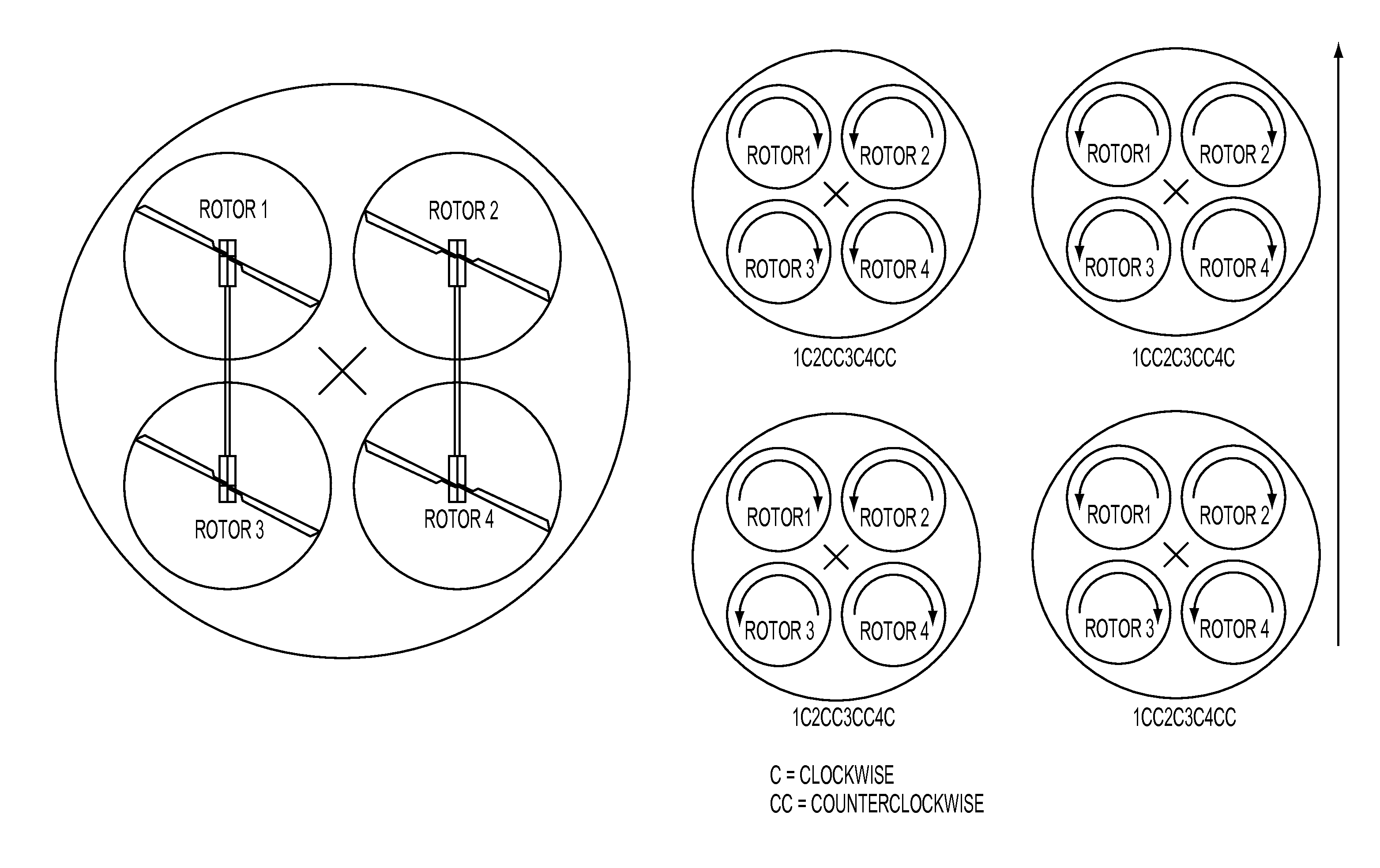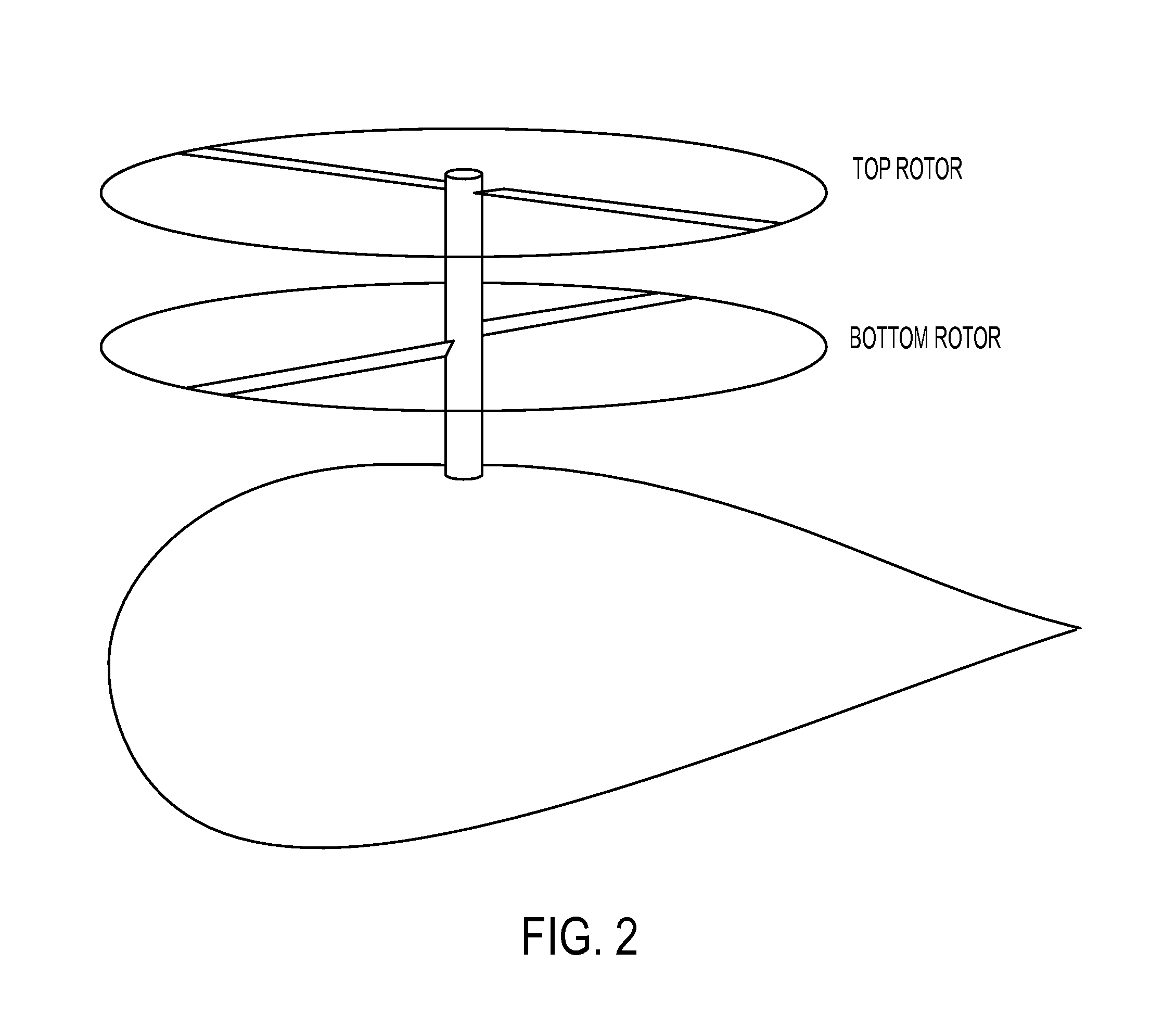Helicopter with two or more rotor heads
a rotor head and helicopter technology, applied in the direction of rotorcraft, aircraft components, aircrafts, etc., can solve the problems of limiting the size of the rotor to be used, the use of two or three rotors does not improve matters, and the craft cannot be stabilized, so as to achieve the effect of improving efficiency and further efficiency
- Summary
- Abstract
- Description
- Claims
- Application Information
AI Technical Summary
Benefits of technology
Problems solved by technology
Method used
Image
Examples
Embodiment Construction
[0025]The present invention gains an additional degree of freedom by using aerodynamic drag differences in each rotor blade as they go through a 360 degrees rotation, and the combination of these forces generated by two or more rotor blades according to a novel scheme. In the embodiment here described, there are four rotor heads, but in an analogous way the same applies to embodiments with smaller or larger numbers of rotors, an example of which is given.
[0026]FIG. 1 explains the different possibilities that exist for the rotation of each of the rotors with respect to the main direction of movement in the case of four rotors. In order to name these different set-ups, the numerals 1 . . . 4 stand for the rotor head number, C for clockwise rotation and CC for counter-clockwise rotation. Thus, the designation 1C2CC3C4CC describes essentially similar rotor movement as does the designation 1CC2C3CC4C, the principal difference being the main direction of movement. The same relative relati...
PUM
 Login to View More
Login to View More Abstract
Description
Claims
Application Information
 Login to View More
Login to View More - R&D
- Intellectual Property
- Life Sciences
- Materials
- Tech Scout
- Unparalleled Data Quality
- Higher Quality Content
- 60% Fewer Hallucinations
Browse by: Latest US Patents, China's latest patents, Technical Efficacy Thesaurus, Application Domain, Technology Topic, Popular Technical Reports.
© 2025 PatSnap. All rights reserved.Legal|Privacy policy|Modern Slavery Act Transparency Statement|Sitemap|About US| Contact US: help@patsnap.com



